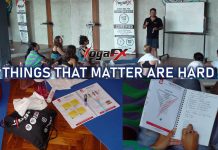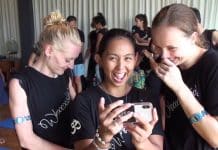In this article, we will discuss the NLP of communication. Let’s simplify the NLP model of Communication see what we can do to cut through the jargon.
Originally conceived and developed by John Grinder and Richard Bandler, NLP or Neuro-Linguistic Programming began as a model of how we communicate and interact with ourselves and others.
The NLP model of communication explains how we process the information that comes in from outside us and what we do with it inside.
In NLP, we believe that “The map is not the territory,” so the internal representations that we make about an outside event are not essentially the event itself.
What happens is that there is an external event and we run that event through our internal processing.
We make an Internal Representation (I/R) of that event. The I/R of the event then combines with physiology to create a state. The word “State” refers to the internal emotional state of the individual happy, sad, motivated, etc.
Did you ever notice that people treat their perceptions differently? Some people have to “see” certain relationships between things, where others have to have it explained or so they can “hear it”. Still, others have to “get a grasp or a feeling” for the relationships. This is the essence of the NLP Communication Model.
What Is The NLP Communication Model?
The NLP Model of Communication describes how we take in messages from outside the body – the external event – and move them through a series of filters into our memory. It’s an important model to learn because once understand that we can learn how the ‘internal representation’ of that event can continue to impact our lives – and what we can do about it.
The words, Internal Representation (I/R) include our internal pictures, sounds and dialogue, our feelings, and tastes, and smells. So, what happens is that an event comes in through our sensory input channels, which are:
1. Visual
Includes the sights we see or the way someone looks at us
2. Auditory
Includes sounds, the words we hear, and the way people say something to us
3. Kinesthetic
Internal or external feelings include the touch of someone or something, the pressure, and texture as well as our emotions.
4. Olfactory
Smell or the faculty that enables us to distinguish scents
5. Gustatory
Taste or the faculty of distinguishing sweet, sour, bitter, and salty properties in the mouth.
So, the external event comes in through the sensory input channels and is filtered and managed by our neurology. As we manage the perception of the event, we delete, distort, and generalize the information according to the following processes that filter our perception.
Components Of The NLP Communication Model
1. Deletion
The deletion occurs when we selectively pay attention to certain aspects of our experience and not others. We overlook or omit others. Without deletion, we would be faced with too much information. Maybe you already are overloaded with information and you feel like you have too much.
2. Distortion
Distortion occurs when we misrepresent reality by making shifts in our experience of sensory data. In Indian philosophy, there is a well-known story of distortion in the rope versus snake analogy.
A man walking along the road sees what he believes to be a snake and yells “SNAKE.” However, upon arriving at that place he is relieved as he discovers that what he sees is only a piece of rope.
Distortion is an important component of the NLP Communication Model and can be used to motivate ourselves. Motivation can happen when we actually misrepresent, change or garble the material that has come into our neurology.
The information has been changed by one of our filtering systems.
3. Generalization
Generalization is the process by which you take an element of your model of the world and use it to represent an entire category of experience. For example, a small child learns that things have ‘handles’ that enable them to be held, moved, opened, and manipulated in some way.
For example, a cup has a handle; a door has a handle; a key can be thought of as a handle; a bag has a handle; a knife and fork are handles that give you a tool to cut and hold. A tap is a handle to open and close water flow; an ‘on off’ switch is a handle; a remote control device for television has several handles called ‘buttons’, and so on.
Generalizations can work for or against you.
For example, having one bad experience with a member of one religion does not mean that all the people who share that religion are the same. In one context it may not be okay to use certain types of words but that does not necessarily mean that it is not okay in other contexts.
Having one bad experience with a woman does not mean all women are the same, yet when people create these types of generalizations it may limit rather than enhance their lives. So that’s the components for the NLP model of communication
Let’s, instead of thinking about external and internal, think of cause and effect. Most people live on the Effect side of the equation, which is what happens externally.
NLP enables us to live on the Cause side, where we can create our own experience, moment by moment.
CLICK HERE For More Course Inclusions and Our June Main Event

















































